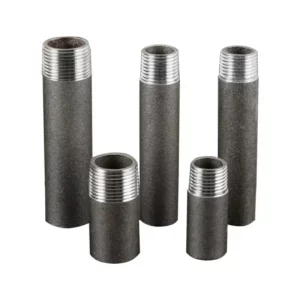How does Rain Hose help in water conservation and efficient irrigation?
Rain Hose plays a significant role in water conservation and efficient irrigation. Here’s how it helps in these aspects:
Precise Water Distribution: Rain Hose is designed to distribute water directly to the root zone of plants, minimizing water wastage. It delivers water in a gentle, rain-like spray pattern, ensuring that the water reaches the target area without excessive runoff or evaporation.
Reduced Overspray and Drift: Unlike traditional sprinkler systems, Rain Hose has a low application rate and limited overspray or drift. This helps prevent water loss due to wind drift or water reaching non-targeted areas, leading to more efficient water usage.
Customizable Coverage: Rain Hose allows for customizable coverage by adjusting the length and positioning of the hose. This flexibility enables farmers and gardeners to water specific areas or crop rows precisely, avoiding unnecessary watering of non-vegetated areas.
Water Savings: By delivering water directly to the root zone, Rain Hose reduces water evaporation and ensures that the majority of the applied water is utilized by the plants. This targeted approach leads to significant water savings compared to traditional overhead sprinkler systems.
Time-Efficient Irrigation: Rain Hose covers a wide area with each pass, allowing for efficient irrigation in less time. It eliminates the need for labor-intensive and time-consuming manual watering, making it a convenient option for large-scale agricultural operations.
Scalability and Adaptability: Rain Hose can be easily adjusted and extended to accommodate different field sizes or crop layouts. This scalability and adaptability make it suitable for various irrigation needs, from small gardens to large agricultural fields.
Water Conservation Practices: Rain Hose can be used in conjunction with water conservation practices such as mulching. By combining Rain Hose irrigation with mulch cover, evaporation is further reduced, enhancing water efficiency and conservation.
Reduced Soil Erosion: The gentle spray pattern of Rain Hose minimizes the impact on the soil surface, reducing the risk of soil erosion.Rain Hose This is particularly beneficial in sloped or uneven terrains where erosion control is important.
Overall, Rain Hose promotes water conservation and efficient irrigation by delivering water precisely to the root zone, minimizing overspray, reducing evaporation, and allowing for customizable coverage. It is a sustainable irrigation solution that optimizes water usage and contributes to resource efficiency.
What are the typical applications of Rain Hose in agricultural practices?
Rain Hose finds various applications in agricultural practices. Here are some typical uses of Rain Hose:
Field Crops: Rain Hose is commonly used for field crops such as cereals, legumes, vegetables, and oilseeds. It provides efficient irrigation for large-scale agricultural fields, ensuring uniform water distribution across the crop rows.
Orchards and Vineyards: Rain Hose is suitable for irrigating orchards and vineyards, where precise water application is crucial for the health and productivity of fruit trees and grapevines. It allows for targeted irrigation at the base of plants, reducing water waste and ensuring optimal water uptake by the roots.
Nurseries: Rain Hose is utilized in nursery operations for watering seedlings, young plants, and potted plants. Its gentle spray pattern and customizable coverage make it suitable for irrigating plants in containers or raised beds.
Greenhouses: Rain Hose can be used in greenhouses for overhead irrigation, providing a controlled and uniform distribution of water to greenhouse crops. It helps maintain optimal moisture levels and supports plant growth in a protected environment.
Vegetables and Leafy Greens: Rain Hose is well-suited for irrigating vegetable crops, including leafy greens such as lettuce, spinach, and kale. It ensures consistent moisture supply to the root zone, promoting healthy plant growth and high crop yields.
High-Value Crops: Rain Hose is often employed in the irrigation of high-value crops such as strawberries, melons, and herbs. These crops require precise and efficient watering to maintain quality and maximize productivity, making Rain Hose a suitable choice.
Sloped or Uneven Terrain: Rain Hose is particularly useful in sloped or uneven terrains where traditional sprinkler systems may result in water runoff or uneven coverage. Its flexibility allows for easy adaptation to the terrain, ensuring efficient water distribution.
Water-Sensitive Environments: Rain Hose is favored in water-sensitive environments where water conservation is crucial. It provides targeted irrigation, minimizing water wastage and reducing the risk of water-related environmental impacts.
These are just a few examples of the diverse applications of Rain Hose in agricultural practices. Its versatility, water efficiency, and adaptability make it a valuable tool for irrigating a wide range of crops and farming operations.
